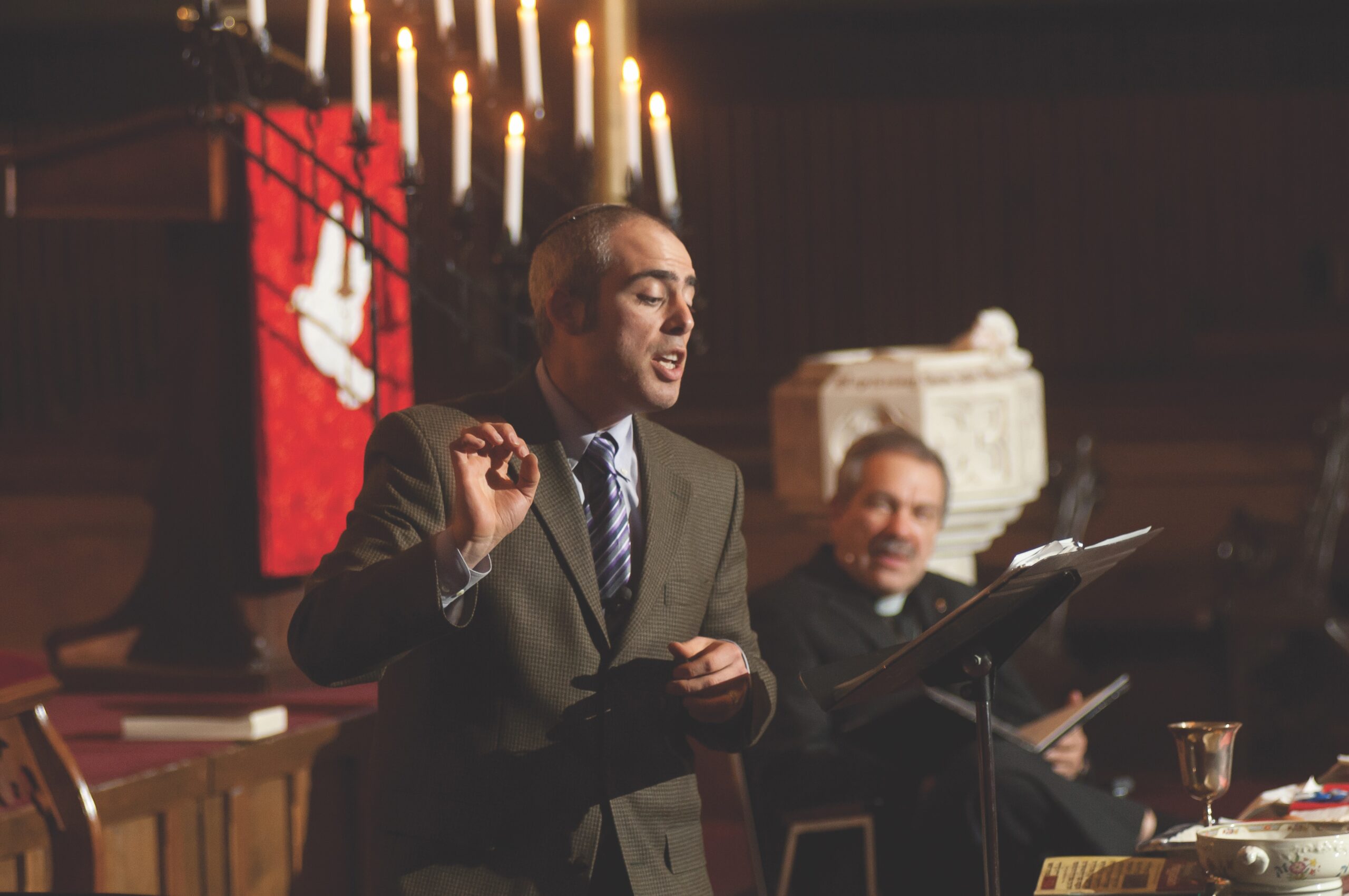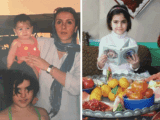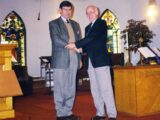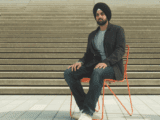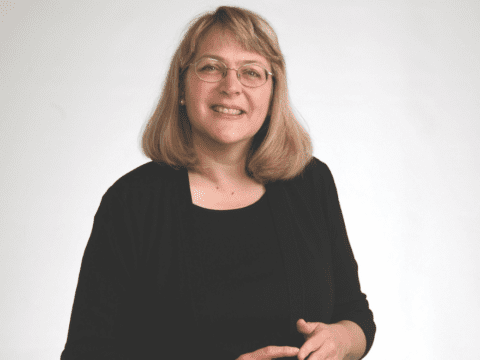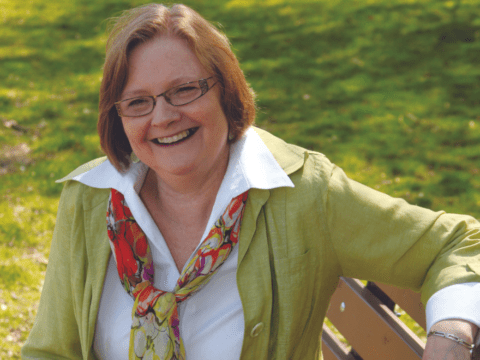Shrouded by the light of four candelabras, David Rosen raises his gaze to the crowd of 50. He inhales deeply, then, in an operatic tenor, belts a haunting tune. Neither his melody nor his words are familiar to most in attendance at Port Hope (Ont.) United.
His cadences, though lilting, feature throaty stops of a language much more ancient than English. His embroidered yarmulke, the skullcap worn by observant Jews, reveals he belongs to a faith that predates Christianity by over a thousand years.
You may unsubscribe from any of our newsletters at any time.
And yet these songs and their tales of suffering and eventual salvation speak to the heart of the message at tonight’s Maundy Thursday service, which falls on the eve of Good Friday and commemorates the Last Supper. Rosen, a cantor at Beth Radom synagogue in Toronto, has come to speak — and, crucially, to sing — about Passover, the Jewish holiday Jesus was observing when he broke bread for the last time.
Co-ordinated by Port Hope United’s musical director, Jason Jestadt, Rosen’s performance is an example of how a handful of United churches are inviting musicians of other faiths into their sanctuaries to foster understanding.
Jennie Keating, organizer of a recent multifaith service at Eglinton St. George’s United in Toronto, explains that music encourages tolerance between religions. “It reaches deep into your heart,” she says. “Worship engages your mind, but music goes into your soul.”
Music plays a variety of roles in the liturgies of the world’s religions. Fred Graham, director of the master of sacred music program at Emmanuel College in Toronto, cautions that the role of music in the United Church may not always be compatible with the rituals of other faith traditions, particularly more conservative denominations.
“Conservative synagogues have no organ, only a cantor,” he notes. “Muslim prayers are chanted by the clergy, not the people, and hymns are unknown.”
Given these differences, “How are we to share choirs when they don’t have choirs?” Graham asks rhetorically. “What’s the overlap?”
Judging by this spring’s event at Port Hope United, among many others, United Church musicians are finding enough overlap — both musical and doctrinal — to successfully collaborate with players from other religious backgrounds. Here are a few steps they took to make these exchanges happen.
MAKE CONTACTS
For churches looking to hold an interfaith musical event, Keating offers the following tip: “Get in touch with Raheel Raza.” Keating saw Raza, a Muslim peace activist, and her multifaith group, the Sacred Arts and Music Alliance (SAMA), perform at an event at Westdale United in Hamilton.
Their presentation inspired Keating to invite members of SAMA to play at her church in January. The resulting service, which featured Hindu, Muslim, Sikh, Jewish and Christian music and prayers, shares an origin story common to many interfaith musical collaborations: an organizer of one faith reaches out to a musician or leader from another.
These meetings of minds not only spawn one-time musical exchanges, but sometimes forge a long-lasting connection. In 2003, Bruce Harding, the music minister at Crossroads United in North Delta, B.C., was hunting down contributors for an interfaith music CD. He got in contact with Amarjeet Singh, a Sikh tabla player who immigrated to Canada from India in the 1990s. Though the two men come from vastly different cultural and musical backgrounds, they regularly convene to jam together. “I consider Bruce to be one of my best friends,” Singh shares.
HOST A CONCERT
Holding a concert outside of regular worship, says Rosen, is a great way to introduce one’s congregation to performers from other faith backgrounds.
“At a concert,” he muses, “people are much more accepting of different styles of music than if all of a sudden it becomes part of your worship, your liturgy.”
The cantor employed this strategy himself, inviting Jestadt and other musicians to add instrumentation to Jewish hymns, which, according to tradition, are to be sung a cappella. The group started performing at an off-site location, but more recently, Rosen has started to experiment with bringing these elements into Shabbat services in Beth Radom’s sanctuary. So far, he says, the response has been staggering:
“Our attendance when we’ve done this new service has been 10-fold for some of our Friday services.”
EMPHASIZE COMMONALITIES
Holidays and other seasonal events present great opportunities for interfaith musical celebrations. They offer occasions for the faithful to display their most colourful, cherished rituals, which often go to the heart of their traditions.
Rosen has performed at Port Hope United around the Jewish observances of Hanukkah and Passover, which roughly coincide with Christmas and Easter, respectively. Not only are there similarities between the Christian and Jewish religious calendars, but Jestadt points to the symbolic connection “between Hanukkah being a celebration of light . . . and Christ being the light of the world.”
The solstice, which evokes themes of renewal common to many religions, provided the occasion for one of Crossroads United’s most recent interfaith events. Advertised as a “soulful evening of interfaith chanting over heavy dance grooves,” the soiree featured musicians representing First Nations, Sikh, Buddhist, Hindu and Christian traditions. An electronic musician added beats and waves to the mix to help the other sounds cohere.
Not only did this multifaith, multicultural jam session prove that different traditions are musically compatible, but it also showed that together, they offer insight on questions that flavour human existence, questions about light, darkness, peace and surrender.
“We were working on universal themes that would reflect various spiritual traditions,” says Harding. “Obviously, every tradition brings its own particular genius to that.”
GET FEEDBACK
When inviting musicians from other faith backgrounds into your fold, “you’ve got to make sure your congregation is on board with the type of relationship you’re trying to create and will welcome the other faith into your community,” says Rosen.
Harding notes that a tiny minority among his congregation expressed discomfort about his December solstice event. He stresses that addressing people’s concerns is a good way to enter into discussion about the purpose of worship and whether there is room for other “truths” in the context of Christian praise. “What are our sanctuaries for?” he asks. Are they exclusively Christian, or are they holy places “where we can gather in different traditions?”
After guiding the congregation through a Seder — the eating of ritual foods and reciting of prayers that accompany a Passover dinner — Rosen concludes with one last hymn. The text of the psalm, common to both Judaism and Christianity, opens with the phrase, “O praise the Lord, all ye nations.” Jestadt plays the grand piano, wrapping the cantor’s voice in a bittersweet melody.
After Rosen’s song fades, Rev. Dan Yourkevich rises, the keys still twinkling in the background, and invites the faithful to take Communion. Humbly, they file down, Jestadt’s gentle tune informing their pace, until the last person receives her blessing.
After the service, I approach Jestadt and remark how well his performance led Rosen’s presentation into Communion. He tells me the transition was more or less improvised, something he and Rosen worked out at the last minute.
“It’s just the music,” he insists, declining to take credit. “It can blur the lines more than anything else.”
***
This story first appeared in The United Church Observer’s May 2012 issue with the title “Religious harmony.”

